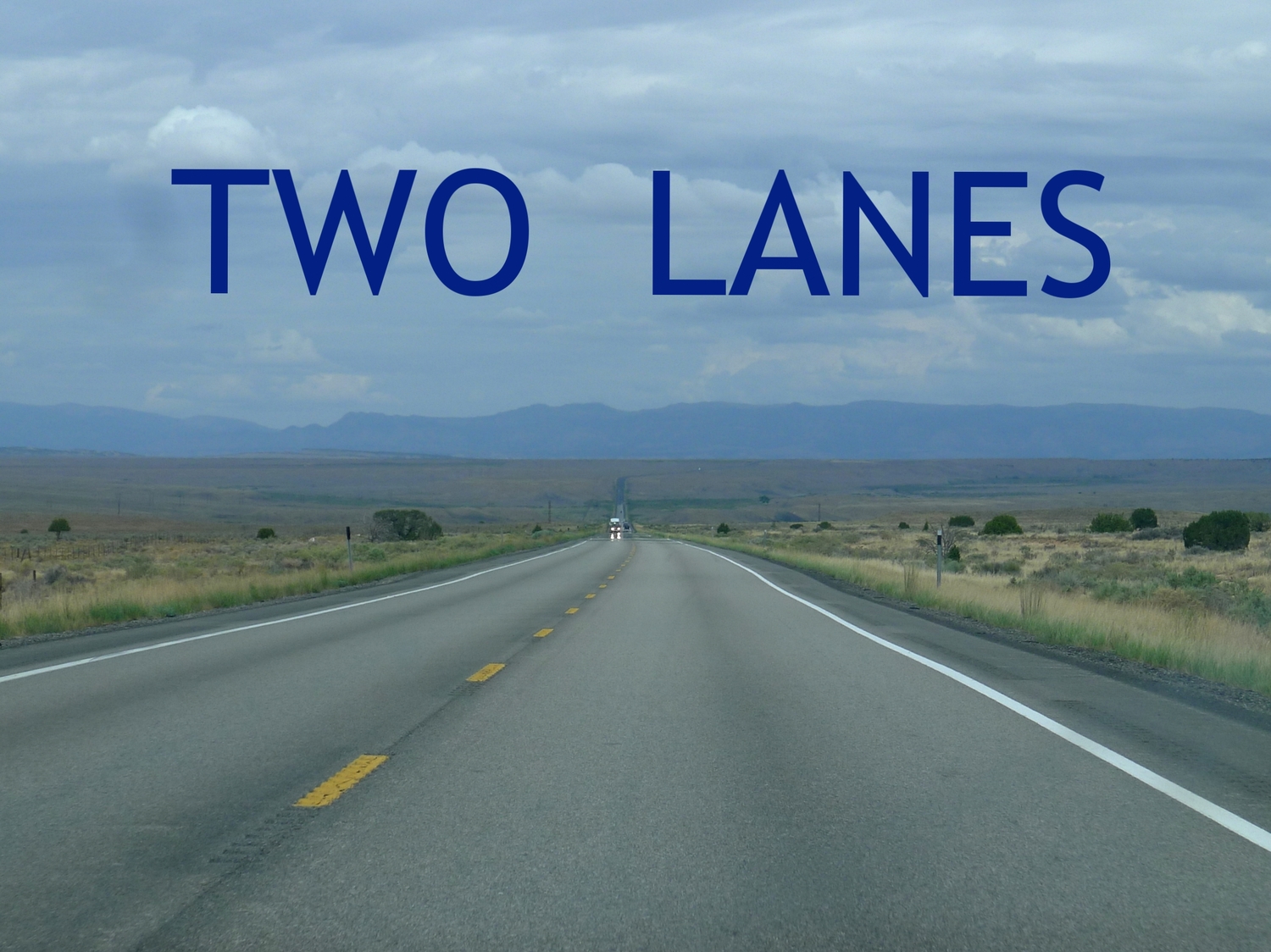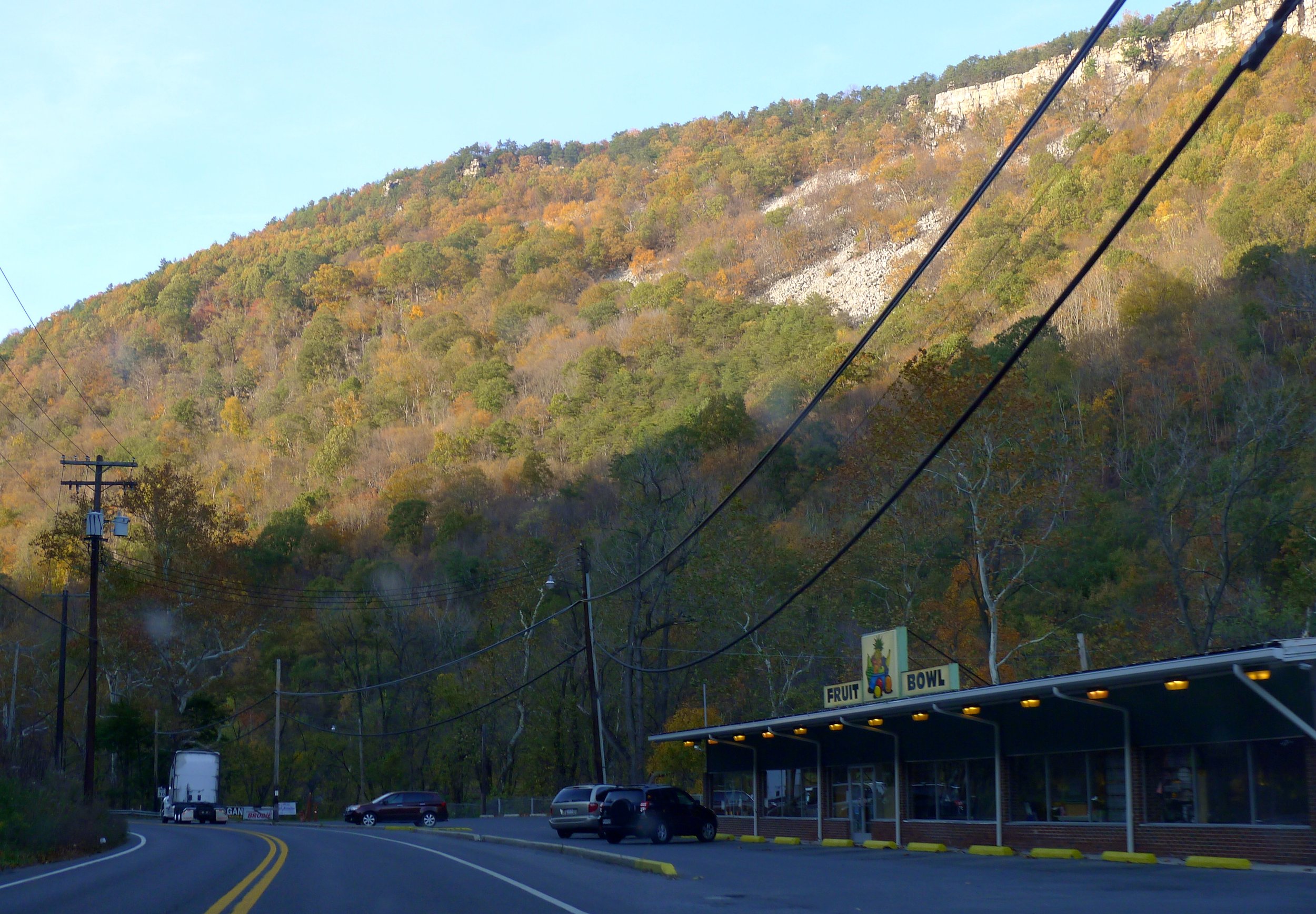The Drive Home, Part III: The Salve
I pass through the Narrows north of Cumberland, their sheer rocky faces obscuring what remains of the daylight. By the time I am free of their imposing clutches, dusk is well on its way to settling over the landscape. My angst from earlier begins to evaporate along with the day’s heat into the pre-twilight air as I think about the next segment of my drive.
There's something indescribably special about the first time serendipity takes the wheel and reveals something that sears itself unforgettably into your mind’s eye. For me, one such watershed was the fortuitous discovery of Pennsylvania Route 160 as a hypotenutical shortcut (geographically, if not in terms of time) between southwestern Pennsylvania and Cumberland. From the Mason-Dixon Line northwest to the hamlet of Berlin, it comprises 18 glorious miles of good, old-fashioned, two-lane blacktop. Along the way it twists and turns, rolls and rises, dips and dives in concert with the undulant terrain instead of destructively punching through it.
Since that fateful April morning many years ago, I've ridden this textbook Blue Highway too many times to count. I've passed through in every season: through the stark, bare winter, above the damp, blooming spring, amidst the sticky haze of summer's peak, and under the cover of dazzling autumn color. I've done it sliding through torrential downpours, immersed in fluffy falling snowflakes, battling fog as thick as blood, and I've done it on some of the most spectacularly beautiful days you could imagine. It never gets old, still as fresh and intoxicating as it was when I first laid rubber to it.
If I’m lucky—if the weather is cooperative and there’s no one in front of me—I can treat this stretch of road like my own personal autobahn. I can take the curves at speeds that turn the yellow advisory chevrons a shade of blushing crimson. I know which upslopes to gun hard in order to experience that exhilarating plunge in my stomach upon descending the other side, as if on a roller coaster. If I do happen to come up on the tail of a slowpoke, well, that’s alright, too. Leisure is the muse behind taking a road like this, after all, not getting somewhere as quickly as possible. There’s the Turnpike for that.
But what makes this route truly special, to me, is the nearly ubiquitous presence of what I opine to be one of the most graceful sights that can be found in nature. They are, ironically, man-made features, the first of which comes into view perched atop a ridge shortly after crossing into Pennsylvania. They are windmills, sleek and sterile white, their three slim propeller blades churning through the calm sky. Up close, the true force of the circular motion can be discerned, a steady whomp, whomp, whomp exhaled as the air is displaced. From the distance of the road, however, it looks merely a lazy pantomime.
No fewer than three different wind farms flank this portion of PA 160 as it snakes through the region. At times, vehicles pass close enough to a turbine that the driver is able to appreciate the enormous scale of the contraption. At other spots, the road offers panoramic vistas of entire colonies, strung out in an orderly fashion like army sentinels guarding a distant hilltop, making it easy to see how Cervantes would have been inspired four centuries ago. For the duration of this jaunt the windmills are almost never out of sight, elegant travel companions along this country road.
Eventually I power up the Allegheny Front and the windmills, now literally Quixotic silhouettes in the gloaming, grow smaller in my rearview mirror. Soon they are nothing more than their red aircraft-warning signals, pulsating on and off as though they are windtalking to an extraterrestrial race.
The road drops and rounds yet another bend, much as it has been doing for the majority of the ride since the state line. At the crest of this latest glen, however, I can catch a glimpse of the town on the hill, sheathed in faded gold from the disappearing day and capped by the cupola atop the quaint schoolhouse.
The town is visible for about ten seconds, just long enough to feel tangible, and then it is gone—at least, from my own eye. Life still goes on inside the town, of course. Years, decades, even centuries pass and, assuredly, some things change. For instance, a dozen-mile chunk of controlled-access highway has been constructed between the larger towns of Somerset and Meyersdale, ostensibly to create a more efficient link between the Turnpike and western Maryland. Upon completion, it co-opted the U.S. Route 219 designation that had constituted the main drag directly through the little town on the hill. Thus the hamlet was officially bypassed, cloaked behind a magician’s veil, effectively vanished to anyone traversing the area.
This is a far too familiar fate for small town America, but I still find it no less distressing when yet another community is rendered some degree of obsolescence by the allure of a fast, seamless four-lane vacuum. That is why I take comfort, albeit shallow, in the notion that the town will always look more or less the same from a distance, like a dollop of white paint dripped carelessly across this Appalachian hillside by the cosmos while she was going about dabbing the stars into their patterns in the sky. Perhaps it might not have appeared all that dissimilarly to Governor Thomas Mifflin when he rode in with federal militia troops in the autumn of 1794 to quell the Whiskey Rebellion.
Bittersweet is the knowledge that when I first see the town from afar, frozen in time, I am only a bit more than an hour from home. (For the sake of comparison, the analogous spot on the Pennsylvania Turnpike is hurtling past the sign informing me that I can treat myself to a lamentable burger at the Somerset Travel Plaza).
This is the Borough of Berlin, and it will probably be alright in the end—its daily bread and cheese are derived principally from the potato chip factory and the drilling equipment company that reside there—but I still can’t help fearing for the town now that its amenities have become forcibly hidden from the through traffic that they had long served and relied on. For the time being, though, it’s largely business as usual on this agreeably warm and clear late summer evening.
Most of the activity is concentrated around the intersection of Main Street, on which I have entered, and former U.S. 219, which carries the name Broadway Street through town. The town’s only stoplight presides over this crossroads, although it is not even really a stoplight but a set of four-way flashers that are programmed to give the motorists on Broadway a perpetual right-of-way.
On one corner, the door to the bar on the first floor of the New National Hotel has been propped open, allowing one to see that this watering hole is well attended when the barroom’s glass brick window, bathed in a soft red glow from a neon beer brand logo, would not otherwise permit such inquiries. Across Main Street from the New National Hotel, a motley crew of teenagers huddles outside the diner, where the final dinner customers of the night have just been seated. These youth are bored, but not menacing, as they clandestinely pass a lighter to spark illicitly purchased Marlboros.
The diner is affixed to a laundromat, which in turn is adjacent to a gas station/convenience store complex. The store is as comprehensively stocked as any generic Interstate Highway Travel Mart (at maybe a third of the square footage), complete with sandwich counter and DVD nook. I worry that it, especially, will face an appreciable decrease in commerce due to the abandonment of Broadway Street as part of a major interregional thoroughfare.
Opposite the diner/gas station/laundromat, occupying an otherwise mostly-unused parking lot, the Ice Cream Station has set up shop in its customary spot. A gem of a roadside confectionary housed in an unassuming trailer shack, at the moment it is doing brisk sales in dispensing cold treats from an impressively expansive menu to a long line of folks. Its popularity is, in my view, the most pleasing aspect of this town that does not seem immediately concerned with its attempted hamstringing.
It is often while I’m queued up for an obligatory frozen dessert that the weight of how close I am to home reawakens to sit squarely on my shoulders. Weariness and anxiety congeal into a cloud over my head. It’s a feeling I’ve grown accustomed to experiencing, if only slightly better at coping with—though a butterscotch milkshake helps to assuage some of these gloomy thoughts.
As I head back to my car, I notice what I surmise to be four generations of a single family, clustered around a picnic table. Two of the men, one middle aged and one elder, are curiously decked out in the crisp, navy blue threads of the Army of the Potomac. They must be members of the Berlin Fife and Drum Corps, the oldest continuously-playing such unit in the country. Their melodies could be heard on Civil War battlefields, on the campaign trail with William McKinley, and at the dedication of the nearby Flight 93 Memorial. On this evening they’ve likely returned from an event in a neighboring town, hopefully some sort of festive procession, but perhaps a more somber affair, such as escorting the casket to a funeral.
I wonder if this particular family can trace its lineage in these parts back to the inception of the troupe near the end of the American Revolution, when veterans of the conflict who had made it back to their Brothersvalley homesteads came together to keep the music of their victory alive. Might one of their forefathers have erected a liberty pole in protest against Hamilton’s tax on distilled spirits?
As the family laughs over their twistees and sundaes, I chastise myself for carrying any negativity. Governor Mifflin has gone home to Philadelphia. Tonight, in Berlin, Pennsylvania, everything is as it should be.
















